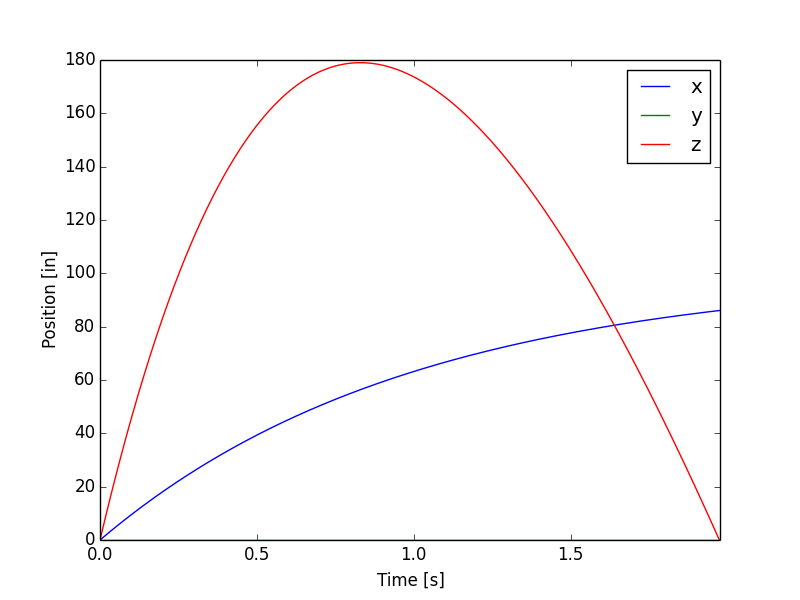Projectile in a ballistic motion¶
Reference: J. B. Marion, S. T. Thornton, Classical Dynamics of Particles & Systems, 3rd Edition, Reference: Saunders
College Publishing, 1988, pp. 60-63.
|
The air resistance force reads
where \(k\) is the resistance proportionality constant, \(m\) is the mass, and \(\mathbf{v}\) is the point mass velocity (nonzero in the \(x-z\) plane). The exact solution is
where \(g_{3}\) is the vertical component of the gravity acceleration vector \(\mathbf{g}\). The travel time from the ground level \(x_{3}\left(0\right)=0\) until \(x_{3}\left(T\right)=0\) is given by
Input parameters¶
Mass \(\left(kg\right)\) |
\(m=0.45359237\) |
Initial linear velocity \(\left(m/s\right)\) |
\(\mathbf{v}=\left[2.54,0,12.7\right]\) |
Gravity acceleration \(\left(m/s^{2}\right)\) |
\(\mathbf{g}=\left[0,0,-9.81456\right]\) |
Proportionality constant |
\(k=1\) |
Results¶
The solution of equation (94) is \(T=1.976\) seconds. The time step used in the analysis was \(h=T/1024\). The table below and Fig. 14 summarise the results.
Target |
Solfec-1.0 |
Ratio |
|
Travel time for projectile \(\left(s\right)\) |
1.9760 |
1.9760 |
1.000 |
\(x\)-direction travel distance \(\left(in\right)\) |
86.138 |
86.081 |
0.999 |

Fig. 14 Displacement of projectile over time.¶